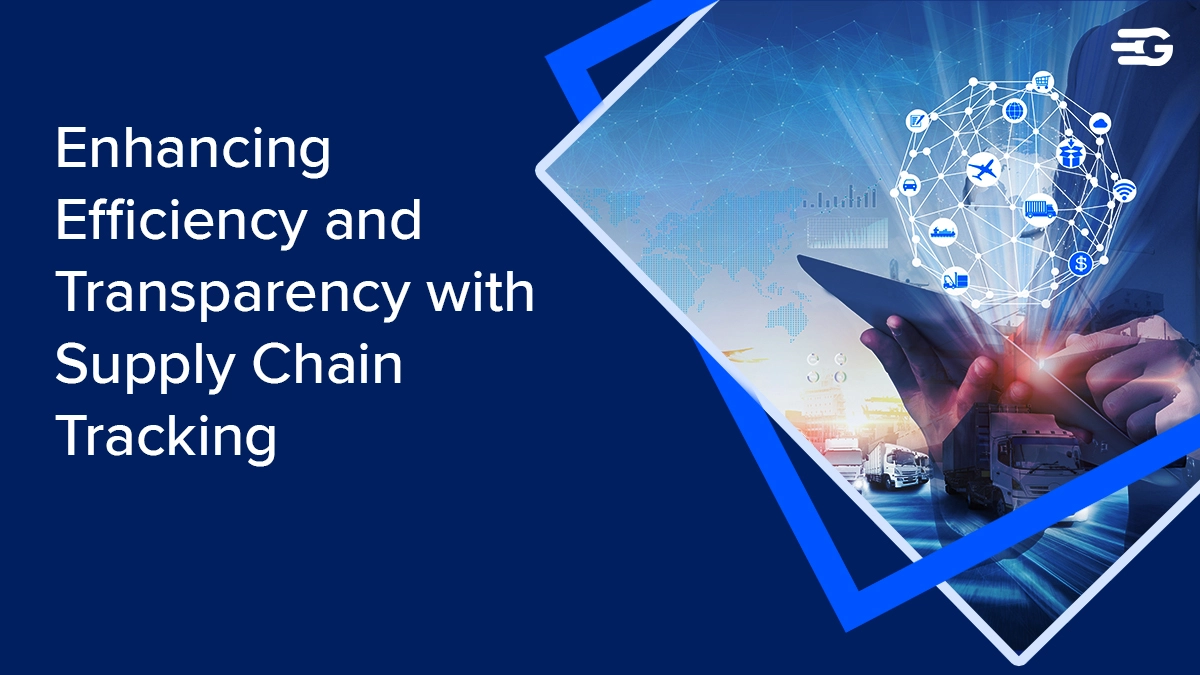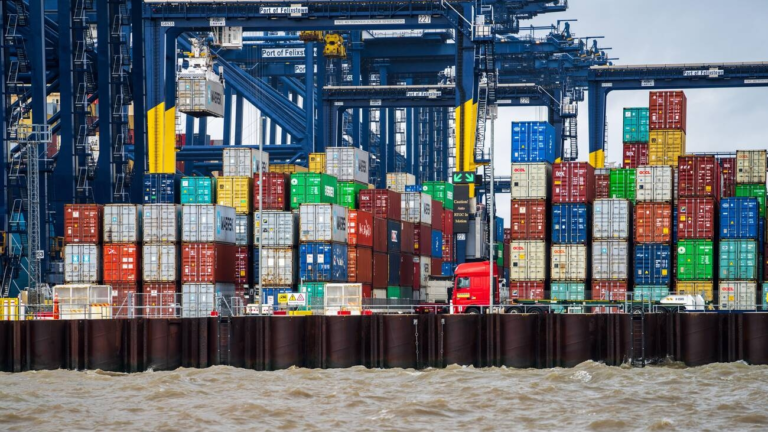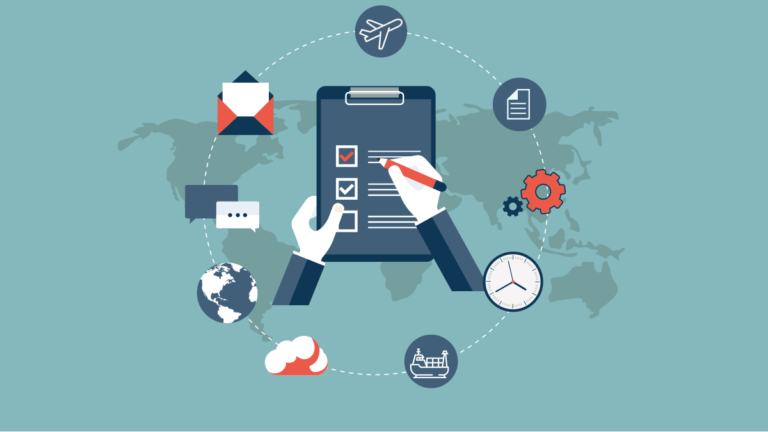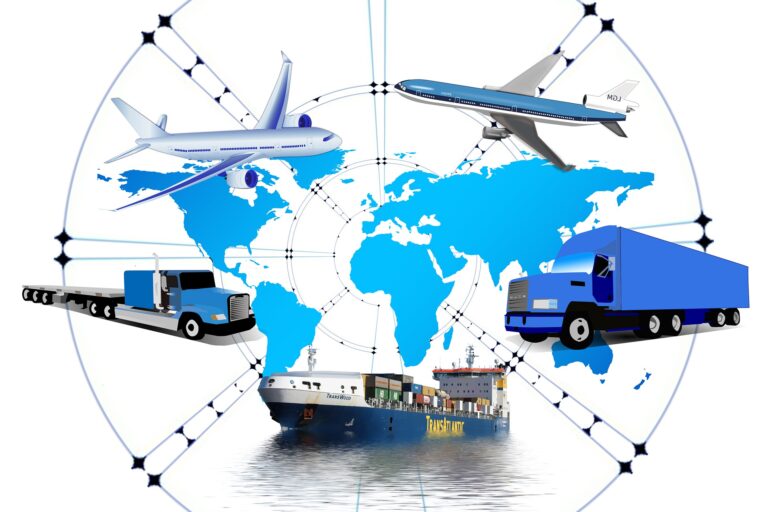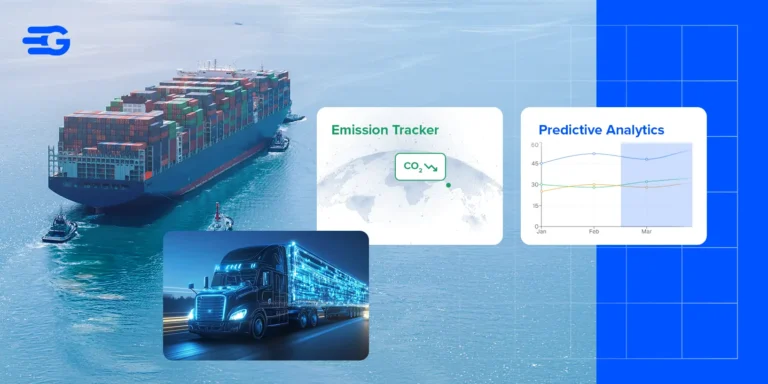Enhancing Efficiency and Transparency with Supply Chain Tracking
One of the prime areas and scope for innovation in supply chain operations is tracking. While privacy remains a myth in this digital world, omnipresence and omniscience don’t seem far-fetched anymore.
Capgemini Research Institute’s report on investments in the supply chain reveals cautious investment strategies by businesses in response to a challenging economic climate. Supply chain disruptions are the top concern, with 89% of surveyed executives prioritizing investments in supply chain resilience. This includes a 10.4% increase in spending on technologies that enhance agility, transparency, and diversification of suppliers, production, and transportation.
Businesses are looking to technology for cost-reduction and faster decision-making, with 39% planning to increase investments in cloud, data, and analytics.
In this context, supply chain tracking emerges as a crucial area for innovation. It refers to the real-time monitoring of the movement of goods and materials throughout the entire supply chain, from raw materials to finished products delivered to the customer. This encompasses everything from tracking inventory levels at warehouses to monitoring the location and status of goods in transit. Supply chain tracking plays a critical role in modern logistics management by providing real-time visibility.
The Importance of Tracking in Supply Chains
Effective supply chains are the backbone of modern business. Understanding where your products and materials are at any given time is crucial for smooth operations and satisfied customers. This is where supply chain tracking comes in.
Benefits of Supply Chain Tracking
Implementing a tracking system offers a multitude of advantages:
- Real-time Visibility: GEP highlights how tracking grants businesses a clear view of their entire supply chain. This allows for proactive management as you can monitor the movement of goods from origin to destination. For logistics professionals on the go, a reliable VPN for iOS ensures secure access to real-time tracking.
- Improved Efficiency: World Favor emphasizes that tracking helps identify bottlenecks and optimize processes. With real-time data, you can adjust inventory levels, streamline production, and ensure on-time deliveries, ultimately saving time and money.
- Reduced Risks: Tracking mitigates various risks associated with the supply chain. You can identify potential problems early on, like damaged goods in transit, and react swiftly to minimize losses. Additionally, effective tracking strengthens quality control and helps ensure regulatory compliance.
Challenges Addressed by Effective Tracking
Supply chains are inherently complex, and several logistical hurdles can disrupt operations. Here’s how tracking helps overcome these challenges:
- Inventory Management: Manual inventory tracking is prone to errors. Tracking systems provide accurate stock levels at every stage, enabling better forecasting and preventing stockouts or overstocking.
- Delivery Delays: Unexpected delays can throw off entire schedules. Tracking allows you to pinpoint the cause of delays – whether it’s at customs, a port, or during transportation – and take corrective actions to get things back on track.
- Product Recalls: In the unfortunate event of a product recall, tracking facilitates a swift and targeted response. You can identify affected products and their location efficiently, minimizing consumer risk and reputational damage.
The ability to manage your supply chain with real-time data and overcome logistical challenges translates into a smoother operation, reduced costs, and ultimately, happier customers.
Key Technologies Powering Supply Chain Tracking
The ability to monitor goods and assets throughout the supply chain in real-time is revolutionizing logistics. Companies like GoComet have revolutionized this domain with impeccable technologies that converge several aspects of tracking such as geofencing, scheduling, congestion, and lead time monitoring offering a one-stop solution.
RFID, GPS, and IoT
These three technologies work together to provide a comprehensive tracking solution:
- RFID (Radio Frequency Identification): Chainpoint highlights how RFID tags use radio waves to identify and track objects]. These tags can be attached to individual items or pallets, allowing them to be scanned at various points in the supply chain, and providing location data. RFID is ideal for short-range, high-volume tracking within warehouses or distribution centers.
- GPS (Global Positioning System): VisiChain explains how GPS utilizes satellites to pinpoint the location of objects equipped with GPS trackers. This is particularly valuable for tracking long-distance shipments, providing real-time location updates and estimated arrival times. However, GPS can be limited by indoor environments or areas with poor satellite reception.
- IoT (Internet of Things): These are smart devices embedded with sensors that collect and transmit data to a central system. In supply chain tracking, IoT sensors can be attached to goods to monitor things like temperature, humidity, or pressure changes. This data can be crucial for ensuring the integrity of perishable goods or sensitive materials.
Blockchain for Enhanced Traceability
Blockchain technology offers additional benefits for secure and transparent tracking:
- Immutable Record-keeping: AWS highlights how blockchain creates a secure, distributed ledger that tracks every step of a product’s journey [3]. All transactions are recorded chronologically and cannot be altered, providing a tamper-proof record of origin, movement, and ownership.
- Enhanced Transparency: This secure record-keeping fosters trust and transparency between all stakeholders in the supply chain. Consumers can gain confidence in the authenticity and provenance of products, while businesses can identify potential issues like counterfeiting or contamination.
Implementing Supply Chain Tracking Solutions
Integrating tracking technologies into your existing supply chain can significantly enhance efficiency and visibility. Here’s a roadmap to guide you through the process:
Steps for Deployment
- Needs Assessment: Begin by conducting a thorough assessment of your current supply chain operations. Identify areas where real-time tracking would be most beneficial. Consider factors like the type of goods you handle, your existing infrastructure, and budget constraints.
- Technology Selection: Based on your needs assessment, research and select the appropriate tracking technologies (RFID, GPS, IoT) or a combination for optimal coverage. Consider factors like scalability, compatibility with your existing systems, and ease of implementation.
- Pilot Program: Before full-scale deployment, implement a pilot program in a limited area of your supply chain. This allows you to test the chosen technologies, identify any integration issues, and refine your approach before a wider rollout.
- System Integration: Integrate your chosen tracking solution with your existing warehouse management system (WMS), transportation management system (TMS), and other relevant IT systems. This ensures seamless data flow and allows you to leverage tracking data for comprehensive insights across your supply chain operations.
System Integration
The true power of supply chain tracking lies in its ability to connect data from different sources. Integration with other IT systems is crucial for maximizing the benefits:
- Warehouse Management Systems (WMS): Data from tracking systems can be fed into your WMS to maintain real-time inventory visibility, optimize picking and packing processes, and improve warehouse efficiency [4].
- Transportation Management Systems (TMS): Tracking data can be integrated with your TMS to track the location and status of shipments in real time. This allows for better dispatch planning, route optimization, and improved customer communication regarding delivery timelines.
- Enterprise Resource Planning (ERP) Systems: Integrating tracking data with your ERP system provides a holistic view of your entire supply chain. This data can be utilized for better production planning, demand forecasting, and resource allocation.
Case Studies: Successful Supply Chain Tracking
Kodak and GoComet: Kodak, a global technology company, was struggling with outdated shipment tracking methods that relied on manual logs and carrier data. This led to a lack of real-time visibility, hindering their ability to identify the best routes, predict delays, and communicate effectively within departments. To address these challenges, Kodak implemented GoComet’s GoTrack solution.
This real-time tracking platform automated the process, reduced manual work by 80%, and provided them with a clear view of all shipments across various carriers. GoTrack’s AI capabilities further empowered Kodak by offering actionable insights for optimizing routes and carriers, allowing for proactive planning around potential port delays. Ultimately, GoTrack transformed Kodak’s supply chain by improving efficiency, communication, and cost savings.
Polymers International and GoComet: Stuck in a web of manual tracking, Polymers International, a distributor of speciality plastics, was struggling to keep tabs on their 200 monthly shipments. This led to a domino effect: confused customers due to unclear delivery timelines, wasted time spent gathering updates across carrier websites, and limited data to make informed decisions. GoComet’s GoTrack automated the process, freeing up staff by 90%, and provided a single platform for live shipment visibility.
This not only improved communication with customers (reducing inquiries by 80%) but also empowered Polymers with valuable data analytics. With GoTrack, Polymers could finally identify reliable carriers, optimize routes, and navigate potential disruptions, transforming their supply chain from frustrating to frictionless.
Enhancing Collaboration Through Innovation
The Role of Collaboration in Supply Chain Innovation
- Shared Knowledge: Collaboration fosters knowledge sharing between different stakeholders. Suppliers, manufacturers, distributors, and even customers can contribute unique perspectives and expertise, leading to a wider pool of ideas for innovative solutions.
- Improved Problem-Solving: By working together, different players can tackle complex challenges more effectively. Open communication allows for the early identification of potential issues and the development of creative solutions that benefit the entire value chain.
- Faster Innovation Cycles: Collaboration can accelerate the innovation process. By working together, stakeholders can quickly test and refine new ideas, bringing them to market faster.
- Enhanced Value Creation: Effective collaboration leads to a more efficient and responsive supply chain. This translates to cost savings, improved product quality, and ultimately, increased value for all participants.
- Meeting Documentation Efficiency: Effective supply chain performance also depends on clear documentation during team meetings. For step-by-step tips and templates, see this practical meeting minutes guide to streamline communication and track action items efficiently.
Tools and Strategies for Enhancing Collaboration
Several tools and strategies can promote collaboration across the supply chain:
- Cloud-Based Platforms: These platforms provide a central hub for sharing data, documents, and communication in real time. This fosters transparency and streamlines collaboration efforts.
- Joint Planning and Forecasting: By working together on demand forecasting and production planning, stakeholders can synchronize their activities and optimize inventory levels throughout the supply chain.
- Standardized Processes: Implementing standardized processes across the supply chain can improve communication and reduce errors. This creates a foundation for smoother collaboration.
- Relationship Building: Investing in building trust and strong relationships with all partners is crucial. Open communication, regular meetings, and joint problem-solving sessions foster a collaborative environment.
By embracing collaboration and utilizing the right tools, businesses can unlock the full potential of innovation within their supply chains.
The Future of Supply Chain Innovation
Predicting Future Trends: A Supply Chain Metamorphosis
The supply chain is evolving rapidly due to groundbreaking technologies. Here’s a look at key trends:
- Microbots on the Rise: While autonomous vehicles aren’t taking over highways just yet, “microbots” are set to transform controlled environments like warehouses. Expect AI-powered robots to optimize tasks like picking and packing, and drone deliveries to become common for urgent items in densely populated areas as regulations adapt.
- AI and Machine Learning: AI won’t replace supply chain professionals but will become an essential tool. Advanced algorithms will predict demand surges from unexpected events, dynamically adjusting production lines in real-time. Ethical oversight will remain crucial to ensure AI-driven decisions are fair.
- Blockchain Beyond Basics: Beyond transparency in food safety, blockchain will automate financial processes. “Smart contracts” could trigger payments upon verified delivery, streamlining cash flow, and blockchain marketplaces could facilitate the exchange of used equipment or excess inventory.
- Granular IoT: IoT sensors will extend beyond warehouses, with tiny sensors embedded in clothing fibers for real-time quality monitoring. This could transform fast fashion by identifying defects early and reducing waste.
Preparing for Tomorrow’s Supply Chain Challenges
As we foresee these changes on the horizon, here’s how businesses can prepare for these upcoming innovations:
- Invest in Digital Transformation: Embrace digital technologies and build a strong IT infrastructure to integrate future innovations seamlessly.
- Develop a Culture of Innovation: Foster a culture that encourages experimentation and embraces new ideas. Invest in training your workforce to adapt to new technologies and processes.
- Build Strategic Partnerships: Collaborate with technology providers and other stakeholders to stay ahead of the curve and leverage their expertise.
- Focus on Agility and Adaptability: Develop a flexible and adaptable supply chain that can respond quickly to changing market demands and technological disruptions.
- Prioritize Data Security and Privacy: As the supply chain becomes increasingly connected, data security and privacy will be paramount. Invest in robust cybersecurity measures to protect sensitive information.
By actively preparing for the future, businesses can capitalize on emerging supply chain innovations and gain a competitive edge in the years to come.
Conclusion: Embracing Innovation in Supply Chain Management
The evolution story of the supply chain seems nothing less than fiction. However, it’s indeed a rapidly evolving reality fueled by a chorus of groundbreaking technologies.
In modern supply chain planning, Artificial Intelligence (AI) serves as the conductor, dynamically adjusting production based on real-time demand fluctuations. Blockchain technology ensures transparency and traceability across the entire supply chain, enhancing security and trust among stakeholders. The Internet of Things (IoT) acts as the connective tissue, with sensors embedded in various assets, enabling real-time monitoring and proactive decision-making. Integrating these technologies into supply chain planning tools enhances efficiency, responsiveness, and collaboration throughout the network.
The future of supply chains isn’t just about efficiency; it’s about composing a symphony of agility, responsiveness, and sustainability. By embracing the transformative melody of innovation, businesses can move beyond simply playing a part in the song and become the composers of their own success stories. They can ensure their supply chains not only adapt but thrive in the ever-evolving global marketplace.
